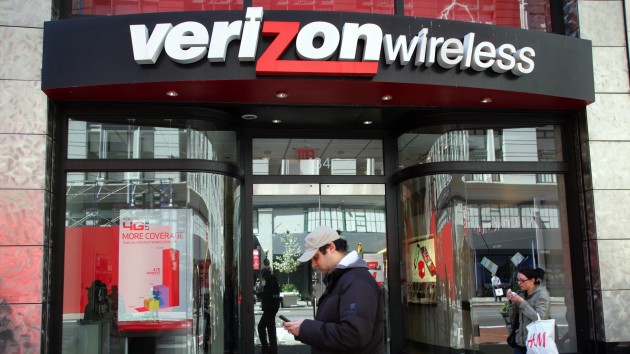
Verizon is laying claim to its name. The US phone company is spending $130 billion to buy the 45 percent of Verizon Wireless it didn’t already own from Vodafone, its longtime British partner.
It’s a high price—$59 billion in cash, the rest in stock, and almost as much as Verizon itself is worth. That in itself suggests that the future of telecom is in wireless, since the market doesn’t seem to attribute much value to Verizon’s traditional wired phone business.
The Very Local Phone Business
It also highlights how, in a rapidly globalizing age, the wireless business remains oddly local. Vodafone ultimately withdrew from the joint venture because Verizon retained control over it. While Vodafone’s been able to spread in Europe and emerging markets, its attempts to go into the United States and Japan foundered. Verizon Wireless threw off a lot of cash for Vodafone, but did little for it strategically.
Verizon, meanwhile, gets control over an American wireless business. It is trying to enter the Canadian wireless market, drawing heavy criticism from the established players there.
Consumers and developers, meanwhile, care less and less about the brand of the network their apps run on, and more about who makes the phone and who runs the app store. Apple, Samsung, and Nokia run global device businesses from California, South Korea, and Finland. And American companies—Apple, Google, and Microsoft—run the marketplaces that let app developers set up shop instantly in dozens of countries at once.
Single-country telecom businesses, the legacies of monopolies either heavily regulated or owned by national governments, seem archaic in this context.
Stop Branding, Start Building
But we still need telecommunications infrastructure. Every wireless connection must hit the wires at some point; the legacy fiber-optic backbones of AT&T, Sprint, and Verizon, once meant to link phones plugged into walls with copper lines, turn out to be very good at carrying wireless traffic, too. And the wireless data they transmit is increasingly just more bits in the sea of Internet traffic.
To the extent that they must remain local, Verizon and the other legacy carriers should keep building on this infrastructure to accommodate the ever-growing demand for data. That should be their presence in the marketplace: the strength, resilience, and reliability of their network, not the particular lineup of devices they have.
A particularly silly practice that they should end is the branding of devices with the carrier’s name. Remember the Verizon Droid? Incredibly, Motorola still plays along and makes these smartphones for Verizon. Do you buy the new Moto X or the Verizon Droid Maxx? Well, if you think Verizon is great at picking smartphone software for you, you might opt for the latter. Otherwise, there’s not much difference.
All-In On The Internet
The consolidation of Verizon and Verizon Wireless should help with another move Verizon has been making: Replacing copper lines with wireless connections. In developing countries, the ability to leapfrog to high-speed wireless broadband, skipping old copper infrastructure, is seen as a positive. But in the United States, Verizon’s plans to abandon its old wired networks in some areas have proven controversial—particularly in Fire Island, New York, where Verizon is opting not to replace hurricane-damaged wiring.
The universality of the old Bell network was a great thing in the 20th century. But in the 21st century, data wants to be fast, wireless, and ubiquitous, and it’s hard to see how copper fits.
Verizon will be cash-constrained for a while as it pays down debt from buying out Vodafone. Something will likely have to go—and it’s likely copper lines. Good riddance.
Photo by Shutterstock
Read more : Why Verizon Just Spent $130 Billion On … Verizon

0 Responses
Stay in touch with the conversation, subscribe to the RSS feed for comments on this post.